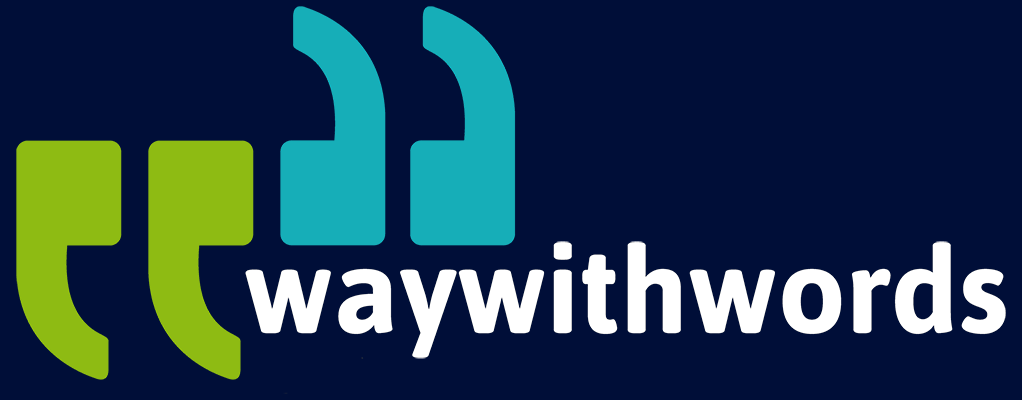What Role Does Metadata Play in Organising Speech Data?
Defining Metadata in the Context of Speech Collections
The value of speech data is undeniable. From training machine learning models to developing accessible AI applications or collecting speech data ethically, curated and annotated audio datasets are foundational. Yet, the unsung hero behind the usability and longevity of these collections is metadata, the structured information that describes, contextualises, and organises the data.
This article explores the critical role that speech data metadata plays in shaping how audio datasets are managed, accessed, and preserved. Whether you’re a data librarian, an audio data engineer, a speech corpus manager, or an ML operations lead, understanding metadata’s function is essential for robust audio dataset management. We will define metadata in the context of speech collections, unpack common metadata schemas, discuss its role in search and retrieval, evaluate tagging approaches, and outline how to maintain metadata integrity over time.
Defining Metadata in Speech Collections
Metadata is often described as “data about data.” In the context of speech data, it refers to the descriptive information accompanying each audio recording. This might include basic identifiers like speaker ID, date of recording, or recording location, but it often goes much deeper.
Key examples of speech metadata include:
- Speaker metadata: age, gender, language, dialect, nationality, region, accent.
- Recording metadata: device type, environment (studio, outdoor, in-vehicle), background noise level, file format.
- Content metadata: topic of speech, script used (if any), duration, transcription availability.
- Collection metadata: project name, data usage rights, version, and licensing details.
Without such descriptors, even the most extensive audio collections become unsearchable black boxes. Metadata ensures that datasets can be reused, verified, filtered, and scaled across diverse machine learning tasks. For instance, a researcher looking to study regional accents in isiZulu speech will need to filter for recordings tagged by region, speaker accent, and language.
Moreover, well-structured metadata improves reproducibility—a key principle in scientific research. Knowing exactly who, when, where, and how an audio file was created allows future users to interpret results accurately or replicate studies with confidence.
In short, metadata is not a supplementary layer of information—it is the architecture that supports discoverability, interoperability, and relevance in speech corpora.
Metadata Schemas and Standards
As metadata became more central to digital archiving and dataset interoperability, various schemas and standards emerged to promote consistency across systems and disciplines. While some were created with general digital assets in mind, others are tailored to linguistic and speech datasets.
Notable metadata schemas include:
- Dublin Core Metadata Initiative (DCMI)
One of the most widely adopted metadata standards, Dublin Core offers a flexible, simple vocabulary with 15 core elements such as title, creator, date, format, and language. Though not speech-specific, it’s often used in early-stage or general-purpose audio archives. - Metadata Object Description Schema (MODS)
Developed by the Library of Congress, MODS is more complex than Dublin Core and provides richer descriptive capabilities. It suits collections requiring bibliographic-style detail, particularly in academic or institutional archives. - OLAC (Open Language Archives Community)
OLAC provides an extension of Dublin Core tailored to language resources, including speech data. It supports precise descriptors for linguistic content and is popular among linguistic data curators. - IMDI (ISLE Metadata Initiative)
Specifically created for spoken language resources, IMDI is a highly detailed metadata framework supporting multilingual, multimodal, and richly annotated corpora. - Custom or project-specific schemas
In many cases, organisations adopt custom metadata models aligned with their specific research or operational needs. For example, a speech data project focusing on child language development may include fields for school grade, cognitive status, or familial linguistic background.
When choosing a metadata schema for a speech collection, it’s essential to strike a balance between comprehensiveness and usability. Overly complex schemas can overwhelm data entry and quality assurance processes, while overly simple ones may fall short in supporting future research or model training requirements.
Ultimately, adhering to recognised metadata standards where feasible supports audio dataset management goals such as interoperability, preservation, and efficient integration into broader linguistic or AI ecosystems.
Metadata in Search and Retrieval
The true power of metadata lies in how it facilitates discovery. With a richly tagged speech dataset, users can query and retrieve specific subsets of data that align with research goals, application requirements, or regulatory constraints.
Here’s how metadata enables effective search and retrieval:
- Filtering by speaker characteristics
Need recordings of female speakers aged 20–30 from KwaZulu-Natal who speak isiZulu with a rural accent? Without detailed metadata tagging, extracting such a subset would be impossible or prohibitively time-consuming. - Environmental filtering
Audio files recorded in vehicles or busy outdoor areas often have different noise profiles than studio recordings. For training robust ASR systems, metadata fields like recording environment, background noise level, or device type become essential. - Temporal and regional queries
Metadata such as recording date or speaker region allows analysts to study temporal changes in speech patterns or regional variations—critical in sociolinguistic research and dialectology. - Partitioning for training and testing
In machine learning workflows, well-structured metadata ensures datasets can be split logically and fairly across training, validation, and testing sets. For example, you might ensure no overlap in speaker IDs between training and evaluation data to avoid bias. - Access control and licensing filters
Not all data is freely available. Metadata can include licensing terms or sensitivity tags, ensuring that only authorised users access restricted or GDPR-compliant data.
Modern data platforms increasingly support metadata-driven querying, using structured metadata fields to allow faceted search. This turns a static archive into a dynamic, responsive research tool.
The more granular and standardised the metadata, the more powerful the search capability—and the more time researchers, engineers, and analysts save in dataset preparation.

Automated vs. Manual Metadata Tagging
One of the biggest decisions in managing speech data is choosing between manual and automated metadata tagging—or finding a balance between the two.
Manual Tagging: Precision and Context
Human-curated metadata remains the gold standard for nuanced and context-rich tagging. A trained annotator can:
- Accurately identify regional accents or dialectal nuances.
- Assign speaker emotion or intent labels that AI may misinterpret.
- Correct inconsistencies in timestamps or transcription alignment.
- Validate speaker demographic data that’s not evident from the audio alone.
However, manual tagging is time-consuming, expensive, and difficult to scale—especially in large, multilingual datasets.
Automated Tagging: Speed and Scale
Automation tools use machine learning and signal processing to extract metadata quickly. Common automation methods include:
- Voice Activity Detection (VAD) for detecting speech segments.
- Speaker diarisation to identify who is speaking when.
- Acoustic analysis for estimating speech clarity, pitch, or emotion.
- Automatic speech recognition (ASR) for generating draft transcripts, from which content metadata (topics, keywords) can be derived.
- Language identification models for tagging recordings by spoken language.
While automation dramatically improves throughput, it often lacks the granularity and contextual accuracy of manual approaches. For example, an ASR model may struggle with low-resource languages or heavy code-switching, leading to metadata errors.
Best practice: Hybrid models
Most speech dataset managers today use a hybrid approach:
- Use automation for high-volume, consistent metadata fields.
- Apply manual review to edge cases, complex fields, or high-value subsets of data.
This strategy ensures metadata is both scalable and reliable—a critical goal for long-term audio dataset management.
Maintaining Metadata Quality Over Time
Metadata quality isn’t a one-time concern. As datasets evolve—through reuse, expansion, or system upgrades—metadata must be maintained to ensure continued relevance and accuracy. This involves processes for versioning, quality control, and consistency.
Common challenges include:
- Metadata drift
Over time, schema fields may change, or values may be entered inconsistently (e.g. “ZA” vs. “South Africa”). Without standardisation, search queries break, and interoperability suffers. - Outdated or incorrect tags
As knowledge improves or errors are discovered, metadata may need correction. For example, an incorrect speaker age or accent label could mislead research findings or corrupt a model’s performance. - Version control issues
If speech data is re-used in different contexts—e.g., with new annotations or transcription corrections—there must be a clear way to indicate version history. - Scalability
As new recordings are added, older metadata standards may no longer fit. Evolving a schema without losing backward compatibility is a real challenge for dataset custodians.
Best practices for maintaining metadata quality:
- Implement schema governance
Create a metadata schema document and update it with every change. Ensure all team members tag consistently using controlled vocabularies. - Use centralised tools
Platforms like Airtable, Dataverse, or custom metadata dashboards help manage consistency, versioning, and access control. - Regular audits
Schedule metadata audits to clean up inconsistencies, missing fields, or deprecated tags. - Data provenance tracking
Track the lifecycle of each recording—when it was created, altered, tagged, or exported—to ensure traceability.
By committing to metadata maintenance, you guard against future technical debt and ensure your speech corpus remains usable across changing technologies and research priorities.
Metadata as the Invisible Infrastructure
While metadata may seem secondary to the audio data itself, it is arguably the most crucial element for managing large-scale, valuable speech collections. It supports speech data metadata governance, enables targeted retrieval, powers accurate training of AI systems, and ensures your data archive remains usable for years to come.
For those involved in collecting, curating, or applying speech data—whether in a linguistic archive or a machine learning pipeline—investing in metadata infrastructure is a strategic imperative.
Resources and Links
Metadata – Wikipedia: An overview of metadata types, standards, and their importance in organising digital assets.
Way With Words: Speech Collection Services: Way With Words offers advanced solutions for real-time speech data collection, tagging, and processing—supporting high-quality metadata and dataset management across industries. Their approach is designed to ensure that speech data is not only captured but also intelligently structured for maximum usability.
